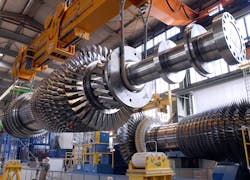Rising labor costs overseas as well as growing concerns over supply chain security could help increase efforts to relocate manufacturing operations back to the U.S., according to a new report – a strategy dubbed “re-shoring” that could significantly benefit domestic transportation operators.
“For years, the discussion of cost was focused on labor cost and labor ‘arbitrage’ but our report reveals that transportation costs, for heavy industry, will be a stronger influence in production location and logistics decisions going forward,” Bob McCutcheon, U.S. industrial products leader for global consulting firm PricewaterhouseCoopers (PwC) told Fleet Owner.
“Shorter lead times and supply chain disruptions have led companies to begin reconsidering their strategy and move production closer to the customer,” he said.
PwC’s report – entitled A Homecoming for U.S. Manufacturing? – claims that seven factors could drive a sustained U.S. manufacturing “renaissance.” Those factors are: transportation and energy costs; currency fluctuations; U.S. market demand; labor costs; U.S. talent; availability of capital; and the tax and regulatory climate.
McCutcheon noted that relocating manufacturing production to the U.S. generally holds greater advantages for some industries over others.
“When taking into account costs spanning labor, materials, transportation and energy, our report shows that chemicals, primary metals and heavy equipment manufacturing industries stand to benefit most from maintaining or expanding facilities in the U.S. given opportunities and cost incentives to re-shore domestically,” he said. “Wood, plastic and rubber products companies could also benefit from changes in domestic costs, but lower net imports in these industries may limit the full economic benefits of on-shoring in the U.S.”
He added that “localizing” production can also help mitigate supply chain disruptions, which totaled $2.2 billion in financial impact for U.S. industrial products companies last year.
However, the direct benefit to trucking from “re-shoring” initiatives may be mixed at best, McCutcheon cautioned.
“Certainly an increase in domestic manufacturing will result in an increase in domestic shipping and we also believe that, with rising fuel costs, transportation is playing an increased role in the cost of production and sales,” he explained. “But the benefits for trucking specifically are not clear. While there should be increased activity, trucking is still a higher-cost mode. Shipments may also move to slower, yet more fuel efficient (thus less costly) modes as well, which could partially off-set some of the benefits.”
Still, McCutcheon stressed that the “bull market” in energy commodities over the last decade has contributed to a major increase in transportation costs for manufacturers with global supply chains.
“Given growing global demand for energy, transportation costs will likely remain elevated – thus making production closer to home more attractive,” he pointed out. “This can also cut down on lead times, reduce inventory levels, mitigate some currency risks, increase control over intellectual property and reduce supply chain disruption risks.”
For those reasons, McCutcheon emphasized, industrial manufacturers may increasingly rethink their U.S. strategies – including the merits of continuing to separate production and R&D and producing abroad and importing back to U.S. buyers.
“Depending on the industry, there may be considerable benefits to establishing regionalized supply chains and R&D facilities in the U.S., such as reducing costs, shortening lead times, protecting intellectual property and mitigating many of the risk factors inherent in developing markets,” he noted.
“As a result, transport companies need to focus on understanding the changing supply chain landscape, McCutcheon stressed. “This shift to short routes and manufacturing closer to the customer, as well as a diversified regional supply chain strategy could result in significant changes in customer behavior.”
About the Author
Sean Kilcarr
Editor in Chief
Sean Kilcarr is a former longtime FleetOwner senior editor who wrote for the publication from 2000 to 2018. He served as editor-in-chief from 2017 to 2018.
